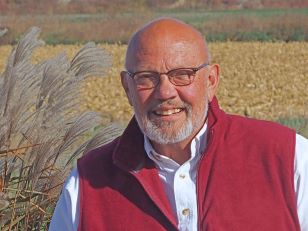A January thaw is what all of us out here look forward to right now, a breath of warmth that reopens our hope that someday soon April will return–two heart-of-winter days, maybe three, of forty degrees. No wind.
Heaven comes to Siouxland.
That’s the relief people felt early on January 12, 1888, when most of those who’d put down homesteads had just arrived.
Here’s how David Laskin describes that morning: “Everyone who wrote about January 12 noticed something different about the quality of that morning—the strange color and texture of the sky, the preternatural balminess, the haze, the fog, the softness of the south wind, the thrilling smell of thaw, the “great waves” of snow on the prairie that gleamed in the winter sun.”
And then this: “The one aspect they all agreed on was the sudden, welcome rise of temperature.” A January thaw, a morning to remember, but a balmy prelude to horror.
Laskin’s book, The Children’s Blizzard, tells the story. When that strange warmth suddenly lifted, hundreds of people, most of them children, perished in a blizzard that made prairie skies dark as night and created massive drifts in winds that drove crystallized snow into your face so ferociously it filled up what flesh it didn’t tear away.
Seven miles east of Freeman, South Dakota, five boys died, lost in the unremitting blast of snow. Three of them were Kaufmanns–Johann, Heinrich, and Elias. What they and two other boys intended was simply to get to safety at the Graber house, a quarter mile east of the school, Ratzlaff #66. The wall they hit was a zero-visibility blizzard.
The victims’ families were all “Schweizers,” German-speaking Mennonites booted from Russia, who’d come to the Dakota Territory with fifty other families seeking the religious freedom they’d looked to find for 200 years–and the opportunity to live a good and safe life. None of them had it easy; sometimes their children would alternate attending school because families didn’t have shoes enough to go around.
But there was promise here in Dakota.
Then came “the Children’s Blizzard.”
Those five Freeman boys just disappeared; and even though search parties went out the next morning in the swirling remnants, no one found them until three days later, on the Sabbath, when a man spotted an arm jutting from a snowbank, an arm belonging to the eldest Kaufmann, Johann, who was likely holding up a coat to shield the younger boys from the killer.
They ended up two-and-one-half miles southeast of Ratzlaff #66, buried by the blizzard, just forty feet from the farm house of the man who found them.
The story goes that man went to church with the news that Sunday. I don’t know if he interrupted worship. I don’t know what they might have been singing, but I can guess how hard they prayed.
No one knows precisely how many people perished in that massive blizzard. Most estimate the grim death toll at somewhere near 250.
It all began with a sweet January thaw that quick as a fox descended into madness. At Valentine, Nebraska, the temperature was 30 degrees at 6 a.m., six degrees at two in the afternoon. and 14 below at nine that night.
Somewhere out in south central Nebraska you’ll find a highway marker that tells that neighborhood’s chapter of the story, but there’s nothing up at all east of Freeman, where five boys died. There’s no sign, no story, only endless rows of corn and soybeans. Even the farms are gone.
All the way from Russia, those Schweizers carried with them an old Mennonite hymn, something with a first line that went like this: “Wherlos und verlassen sehnt sich oft mein Herz nach stiller Ruh”—“When I’m lonely and defenseless,/my heart longs for rest and peace.”
Maybe that Sunday, that old favorite was the one they went back to, all of them. If not that Sunday, surely the next.


